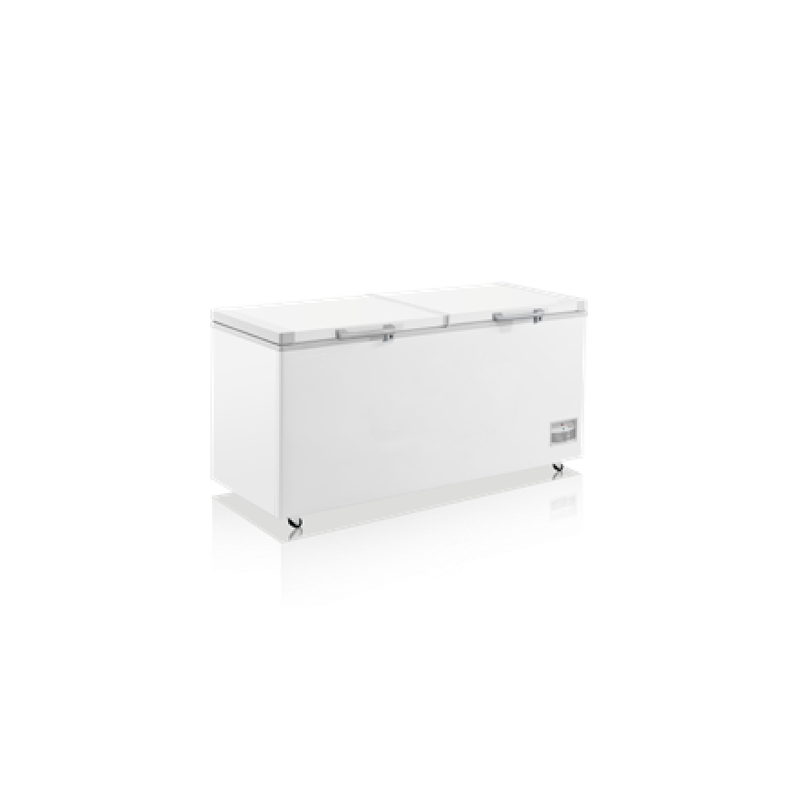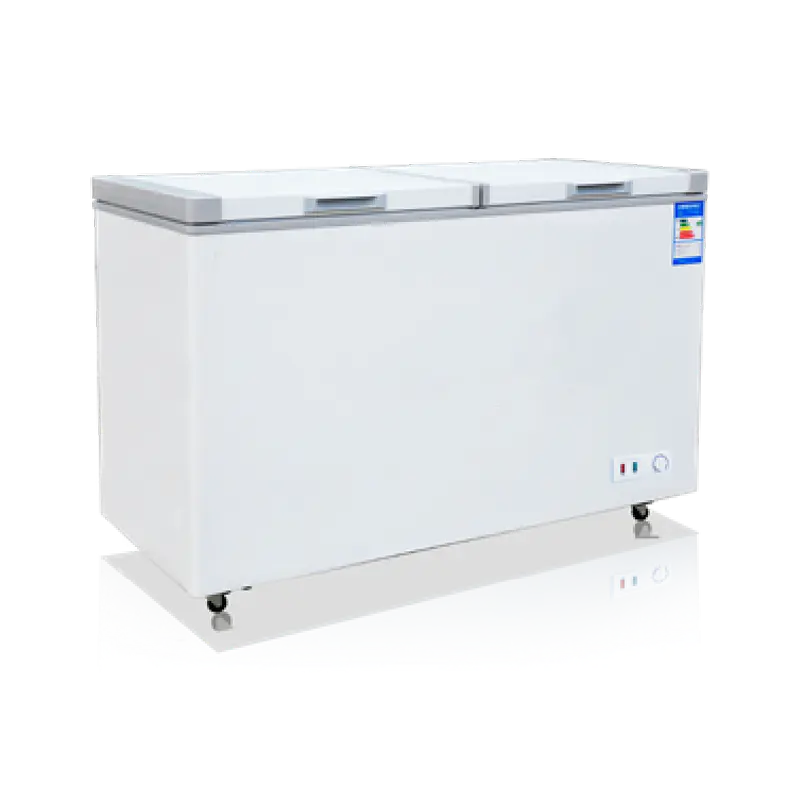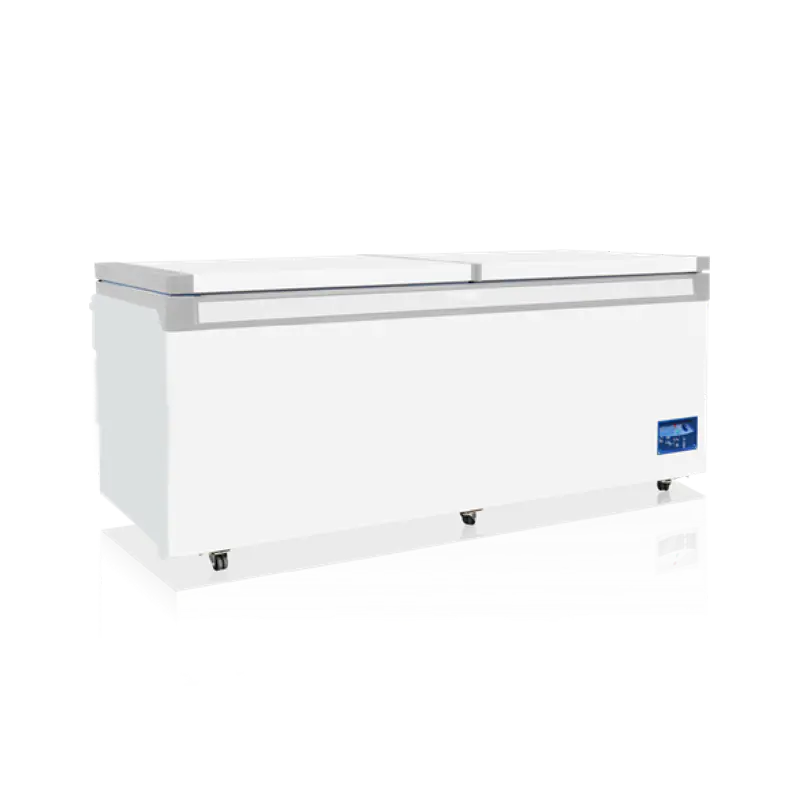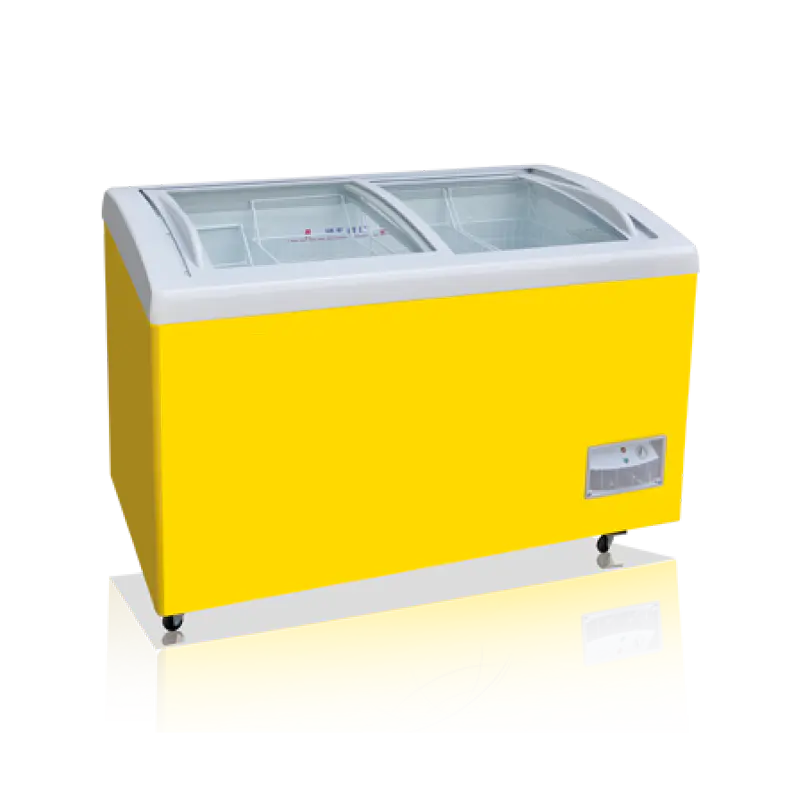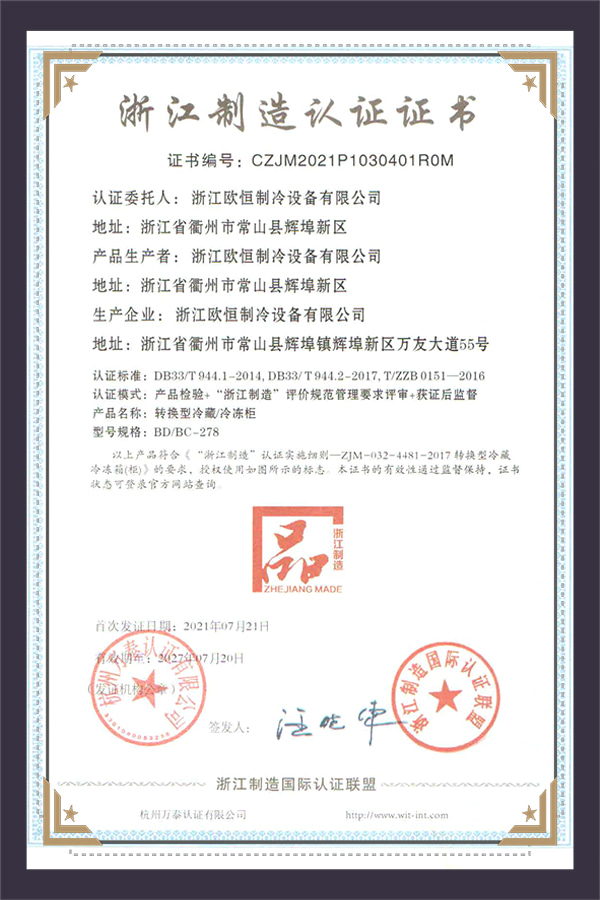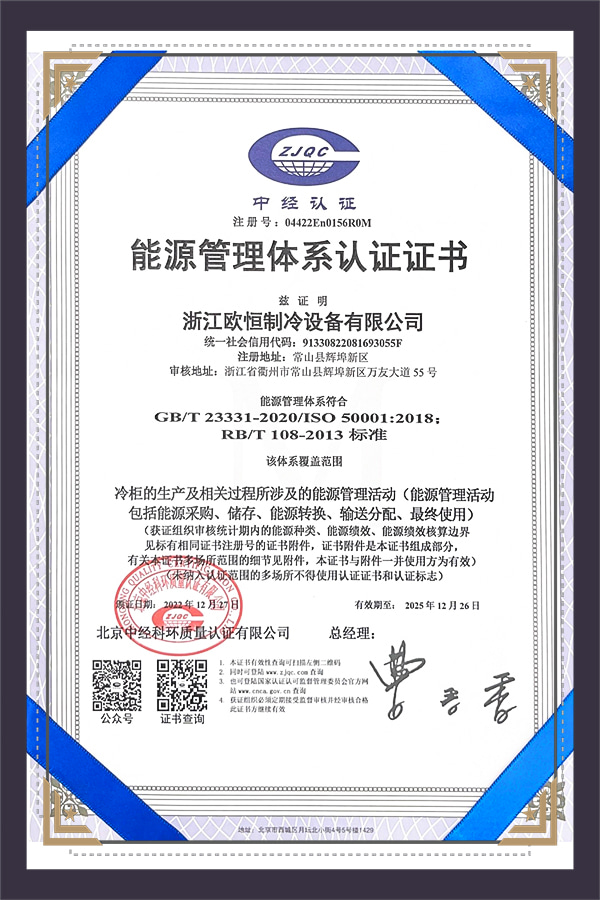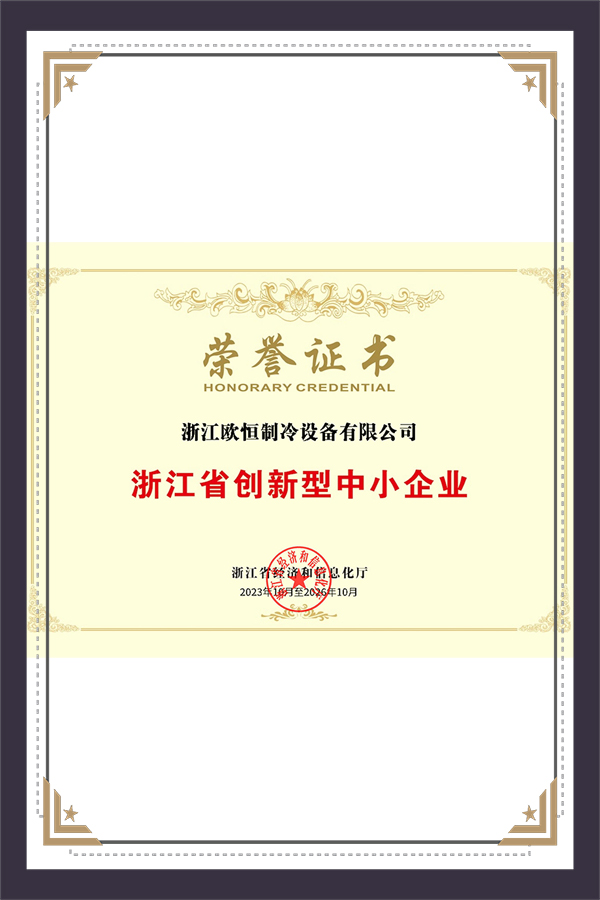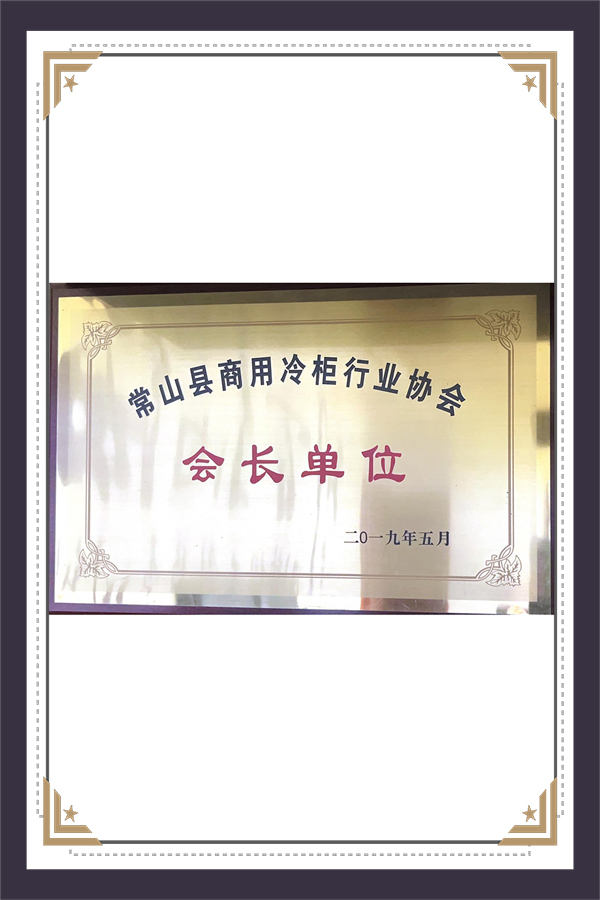Guarantee High Quality
With Our Expertise
Commercial Chest Freezers Manufacturers
The chest freezer series with powerful cooling capacity and reliable insulation design. With thickened insulation foam and energy-efficient technology, every model in the series maintains consistently low temperatures, creating a safe and dependable environment for food storage.
Whether it’s for ultra-low temperature freezing or everyday household preservation, the series is designed to adapt to different needs. A variety of sizes and capacities are available, allowing families, retailers, and restaurants to select the solution that best matches their requirements.
A shared highlight across the series is the stepped door seal design, which minimizes cold air leakage and ensures stronger sealing performance. Even with frequent access, the interior temperature remains stable, keeping food fresh longer while reducing overall energy consumption.
Attention to detail is another defining trait of the series. Features such as optimized frost reduction and odor prevention make storage cleaner and more convenient. From seafood and meats to fruits, vegetables, and beverages, food retains its natural taste without unwanted flavor transfer.
Our chest freezer series offers more than just storage units—it provides a versatile and reliable freezing solution. By combining various models and functions, it delivers flexibility, efficiency, and healthier preservation for households, supermarkets, and food service businesses alike.

-
0 +Establishment year
-
0 ㎡Factory Area
-
0 +Number of employees
-
0 +Monthly production container
-
2025-12-26Mineral buildup (scale) is the most common preventable cause of slow ice production, cloudy cubes, and premature service calls. Scale forms when dissolved minerals—primarily calcium and magnesium—precipitate onto cold an...
-
2025-12-16What the “24 Hours” Really Means for an Ice Maker When manuals say “allow 24 hours for the ice maker to make ice,” they are usually describing time to reach normal, full ice production—not that the first cube requires a...
-
2025-12-08Common commercial uses by industry Commercial ice makers support very different workflows depending on the industry. Matching the ice type, production rate and footprint to the use-case reduces waste and operational prob...
Energy Efficiency and Food Preservation Technology in Commercial Chest Freezers
Thickened Insulation Foam for Stable Cooling
High-quality commercial chest freezers are equipped with thickened insulation foam, which helps lock in cold air and maintain a stable internal temperature. This minimizes energy loss, reduces electricity consumption, and ensures that food remains consistently frozen—even during frequent door openings.
Ultra-Low Temperature for Maximum Freshness
Unlike standard freezers, these units can reach ultra-low temperatures that prevent bacterial growth and extend the shelf life of perishable goods. This is especially valuable for restaurants, catering businesses, and supermarkets that require safe, long-term storage of meat, seafood, and dairy products.
Stepped Door Seal Design to Prevent Frost and Odor
A stepped door seal design enhances airtight performance, effectively reducing frost buildup and eliminating unwanted odors inside the freezer. This makes daily maintenance easier and keeps the interior environment hygienic, ensuring that food products retain their original flavor and texture.
Energy Savings with Reliable Performance
By combining insulation, low-temperature efficiency, and frost prevention, these freezers deliver significant energy savings without compromising performance. Businesses benefit from reduced utility bills while also supporting eco-friendly operations.
Glass Top Design Advantages in Commercial Chest Freezers
Enhanced Product Display
The transparent sliding glass top allows staff and customers to quickly identify food items without opening the lid. This not only saves time but also helps maintain the freezer’s internal temperature, reducing energy loss.
Easy Access and Operation
With its smooth sliding mechanism, the glass top design provides easy and convenient access to frozen products. Staff can retrieve ingredients faster during busy service hours, while customers in retail settings enjoy a seamless browsing experience.
Improved Energy Efficiency
Since the glass top reduces the need to keep opening the lid unnecessarily, it helps minimize fluctuations in temperature. As a result, the freezer operates more efficiently, keeping products fresh while lowering power consumption.
Application Scenarios and Industry Use of Commercial Chest Freezers
Restaurants and Hotels
In busy kitchens, chest freezers serve as the backbone of bulk food storage. Chefs rely on them to store meat, seafood, vegetables, and prepared dishes at stable temperatures. With their large capacity and consistent performance, these freezers help restaurants reduce food waste and streamline operations.
Catering and Event Services
Catering businesses often need to transport and store large volumes of frozen ingredients. The efficient insulation and ultra-low temperature capabilities of commercial chest freezers make them a trusted solution for keeping food fresh during preparation and before events.
Supermarkets and Retail Stores
For retail environments, chest freezers with glass tops double as both storage and display units. Customers can easily browse frozen foods such as ice cream, dumplings, or seafood, while businesses benefit from energy-efficient performance and a professional presentation.
Food Processing and Wholesale
Food processors and distributors rely on chest freezers for long-term preservation of raw materials and finished products. The stepped door seal and frost reduction technology ensure that large quantities of goods remain in top condition until they reach the end consumer.
User Pain Points and Solutions in Commercial Chest Freezers
Problem1: Frost Buildup
Challenge: Frequent frost accumulation reduces usable storage space, makes cleaning difficult, and can damage food packaging.
Solution: The stepped door seal design and optimized airflow significantly reduce frost formation, keeping the freezer interior clean and maximizing storage capacity.
Problem2: Unpleasant Odors
Challenge: Mixed storage of seafood, meat, and other perishables often leads to unwanted odors inside the freezer.
Solution: With constant ultra-low temperatures and improved sealing performance, these freezers minimize bacterial growth and odor transfer, ensuring food retains its natural freshness.
Problem3: High Energy Consumption
Challenge: Commercial freezers are often blamed for high electricity bills, especially in businesses with long operating hours.
Solution: Thickened insulation foam reduces energy loss by locking in cold air, while efficient cooling systems maintain stable temperatures with less power consumption.
Problem4: Uneven Cooling
Challenge: Some freezers struggle to keep food evenly frozen, leading to inconsistent product quality.
Solution: Advanced constant temperature technology ensures stable, uniform cooling across all storage areas, protecting food from spoilage and waste.


 English
English русский
русский Español
Español عربى
عربى


